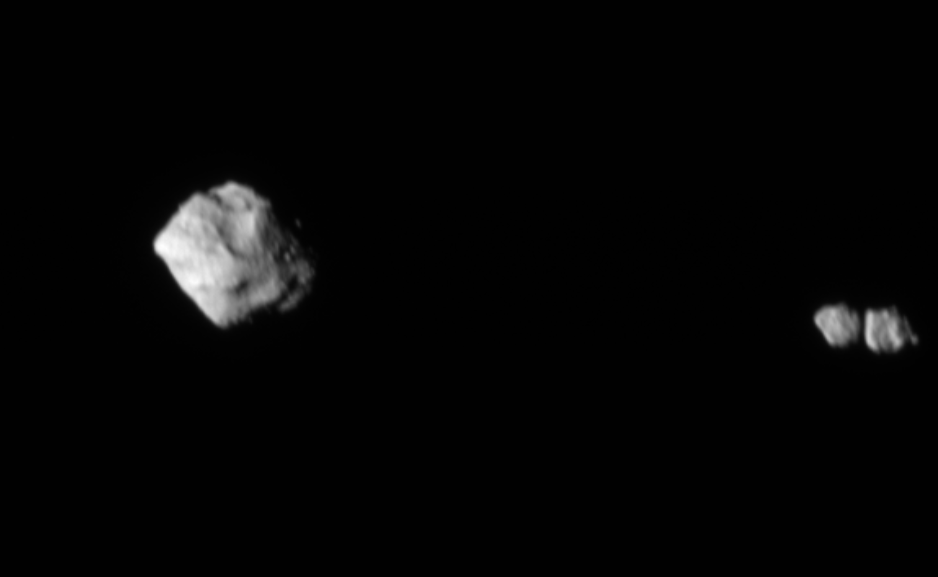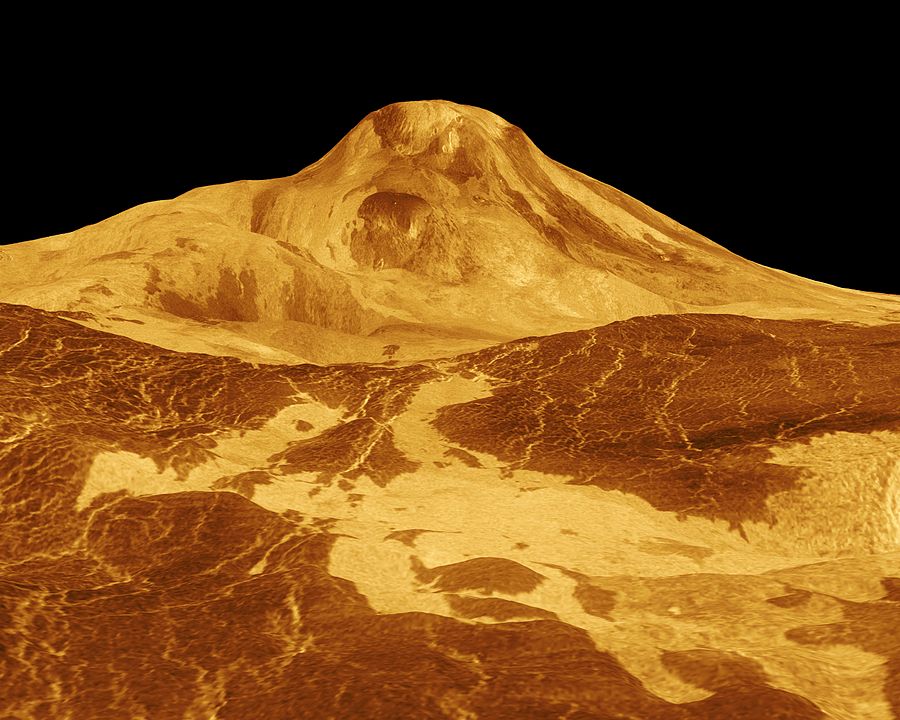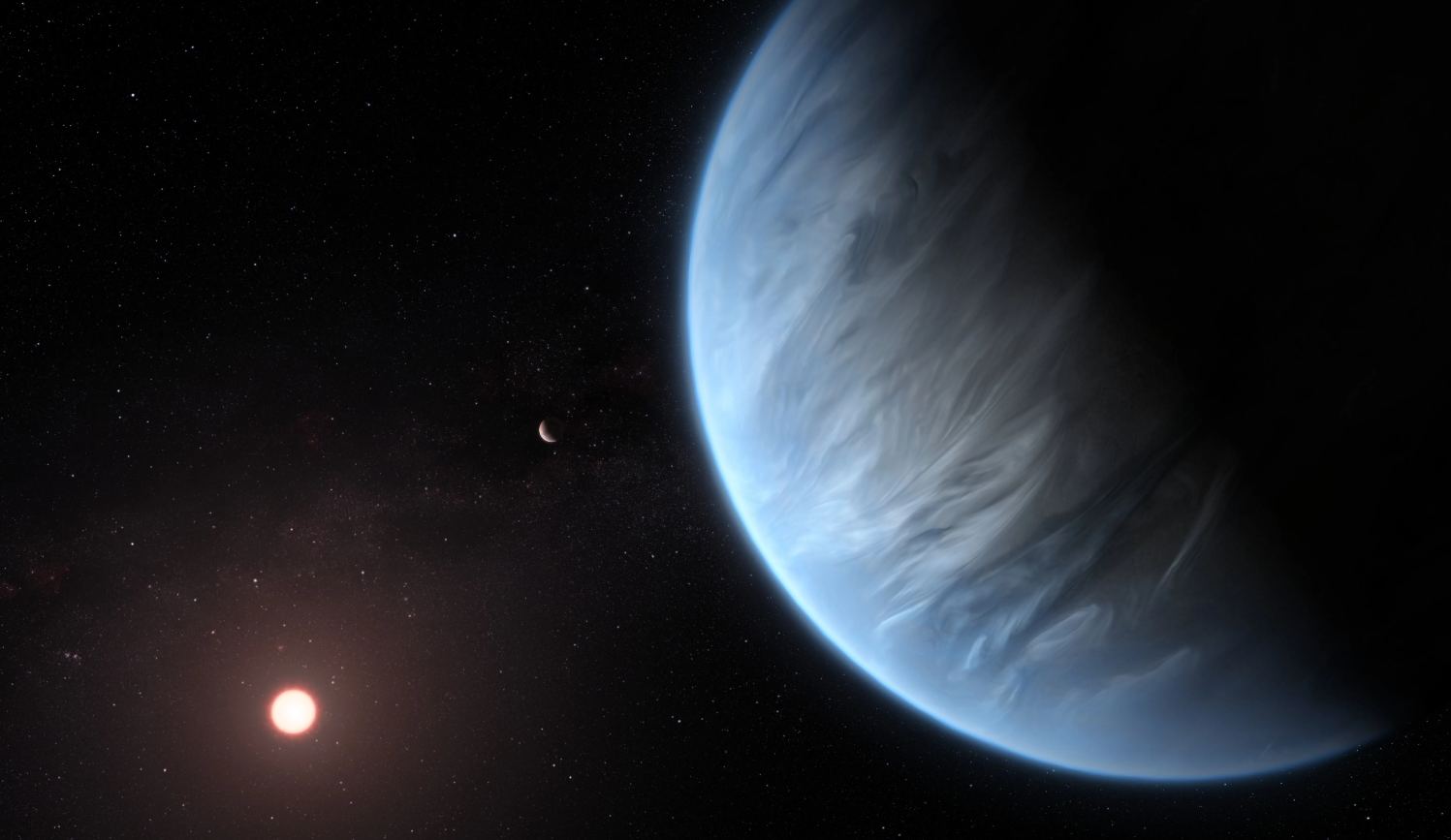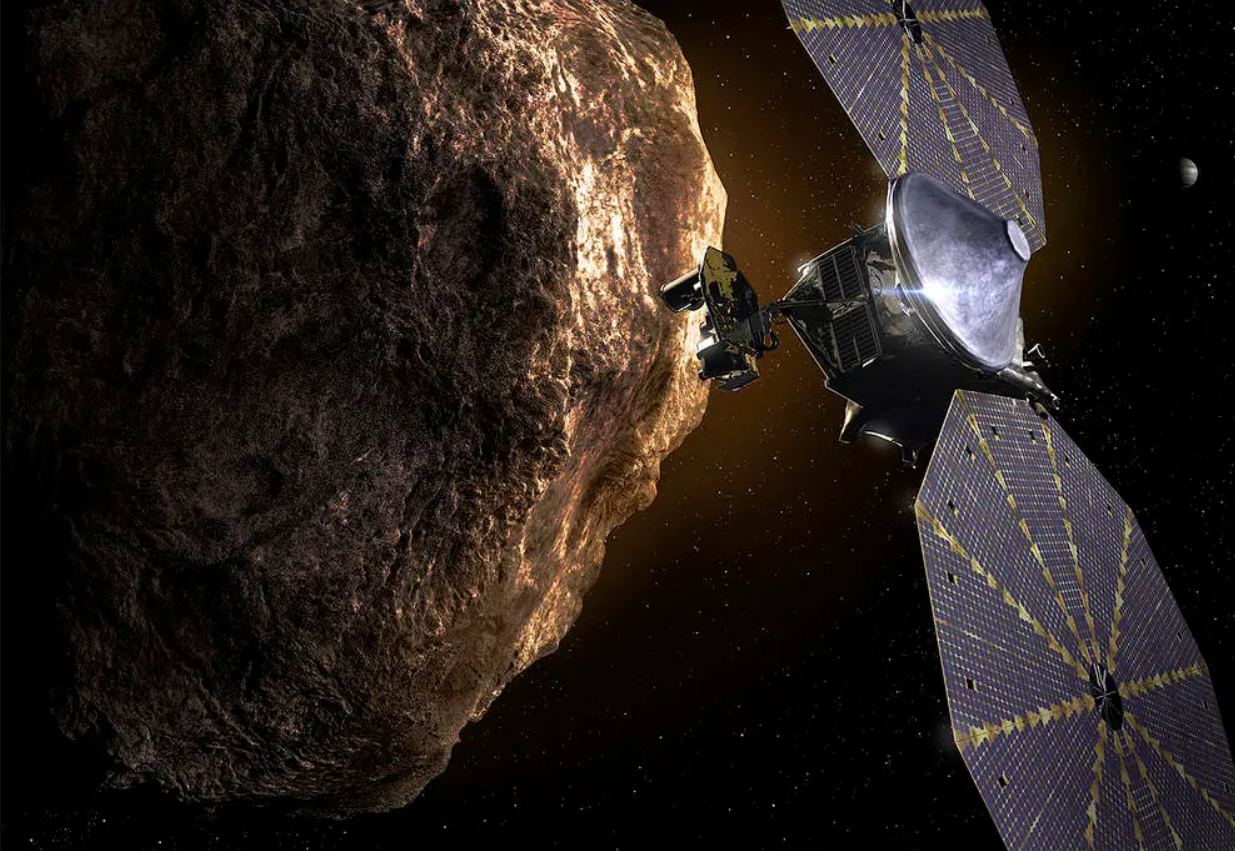There are millions of asteroids floating around the solar system. With so many of them, it should be no surprise that some are weirdly configured. A recent example of one of these weird configurations was discovered when Lucy, NASA’s mission to the Trojan asteroids, passed by a main-belt asteroid called Dinkinesh. It found that Dinkinesh had a “moon” – and that moon was a “contact binary”. Now known as Selam, it is made up of two objects that physically touch one another through gravity but aren’t fully merged into one another. Just how and when such an unexpected system might have formed is the subject of a new paper by Colby Merrill, a graduate researcher at Cornell, and their co-authors at the University of Colorado and the University of Bern.
Continue reading “Finding The Age Of A Contact Binary “Moon””After Swirling Around a Black Hole, Matter Just Falls Straight In

The physics surrounding black holes is just plain weird. A gravitational well so strong that not even light can escape can do some pretty strange things to normal matter. Over the decades, plenty of theories have been put forward about what those strange things might be. And now, a new paper from physicists at the University of Oxford has proved that, once again, Einstein’s theory of gravity was right.
Continue reading “After Swirling Around a Black Hole, Matter Just Falls Straight In”New Shepard’s 25th Launch Carries Six to the Edge of Space and Back
Sending tourists to space is still relatively novel in the grand scheme of humanity’s journey to the stars. Dennis Tito took the first-ever paid trip in 2001, but since then, plenty of others have journeyed to the heavens. Increasingly, they’ve done so via systems developed by private companies. On Sunday, May 19th, Blue Origin, originally founded by Jeff Bezos to pursue his dreams of humanity’s future in space, successfully launched its seventh crewed mission – this time containing six first-time astronauts, including one that waited a long time for his day in space.
Continue reading “New Shepard’s 25th Launch Carries Six to the Edge of Space and Back”Scientists Test for Quantum Gravity
The tension between quantum mechanics and relativity has long been a central split in modern-day physics. Developing a theory of quantum gravity remains one of the great outstanding challenges of the discipline. And yet, no one has yet been able to do it. But as we collect more data, it shines more light on the potential solution, even if some of that data happens to show negative results.
Continue reading “Scientists Test for Quantum Gravity”Gravitational Lenses Could Pin Down Black Hole Mergers with Unprecedented Accuracy
Gravitational wave astronomy has been one of the hottest new types of astronomy ever since the LIGO consortium officially detected the first gravitational wave (GW) back in 2016. Astronomers were excited about the number of new questions that could be answered using this sensing technique that had never been considered before. But a lot of the nuance of the GWs that LIGO and other detectors have found in the 90 gravitational wave candidates they have found since 2016 is lost.
Researchers have a hard time determining which galaxy a gravitational wave comes from. But now, a new paper from researchers in the Netherlands has a strategy and developed some simulations that could help narrow down the search for the birthplace of GWs. To do so, they use another darling of astronomers everywhere—gravitational lensing.
Continue reading “Gravitational Lenses Could Pin Down Black Hole Mergers with Unprecedented Accuracy”Some Clever Ways to Search for Primordial Black Holes
Primordial Black Holes (PBHs) have recently received much attention in the physics community. One of the primary reasons is the potential link to dark matter. In effect, if PBHs can be proven to exist, there’s a very good chance that they are what dark matter, the invisible thing that makes up 85% of the universe’s mass, is made of. If proven, that would surely be a Nobel-level discovery in astrophysics.
Continue reading “Some Clever Ways to Search for Primordial Black Holes”How Much of Venus’s Atmosphere is Coming from Volcanoes?
There’s a lot we don’t know about the planet nearest to us. Venus is shrouded in clouds, making speculation about what’s happening on its surface a parlor game for many planetary scientists for decades. But one idea that always seems to come up in those conversations – volcanoes. It’s clear that Venus has plenty of volcanoes – estimates center around about 85,000 of them in total. However, science is still unclear as to whether there is any active volcanism on Venus or not. A new set of missions to the planet will hopefully shed some light on the topic – and a new paper from researchers from Europe looks at how we might use information from those missions to do so.
Continue reading “How Much of Venus’s Atmosphere is Coming from Volcanoes?”The Seven Most Intriguing Worlds to Search for Advanced Civilizations (So Far)
Sometimes, the easy calculations are the most interesting. A recent paper from Balázs Bradák of Kobe University in Japan is a case in point. In it, he takes an admittedly simplistic approach but comes up with seven known exoplanets that could hold the key to the biggest question of them all – are we alone?
Continue reading “The Seven Most Intriguing Worlds to Search for Advanced Civilizations (So Far)”If We Want to Visit More Asteroids, We Need to Let the Spacecraft Think for Themselves
Missions to asteroids have been on a tear recently. Visits by Rosetta, Osirix-REX, and Hayabusa2 have all visited small bodies and, in some cases, successfully returned samples to the Earth. But as humanity starts reaching out to asteroids, it will run into a significant technical problem – bandwidth. There are tens of thousands of asteroids in our vicinity, some of which could potentially be dangerous. If we launched a mission to collect necessary data about each of them, our interplanetary communication and control infrastructure would be quickly overwhelmed. So why not let our robotic ambassadors do it for themselves – that’s the idea behind a new paper from researchers at the Federal University of São Paulo and Brazil’s National Institute for Space Research.
Continue reading “If We Want to Visit More Asteroids, We Need to Let the Spacecraft Think for Themselves”Why is it so hard to drill off Earth?

Humans have been digging underground for millennia – on the Earth. It’s where we extract some of our most valuable resources that have moved society forward. For example, there wouldn’t have been a Bronze Age without tin and copper – both of which are primarily found under the ground. But when digging under the ground on celestial bodies, we’ve had a much rougher time. That is going to have to change if we ever hope to utilize the potential resources that are available under the surface. A paper from Dariusz Knez and Mitra Kahlilidermani of the University of Krakow looks at why it’s so hard to drill in space – and what we might do about it.
Continue reading “Why is it so hard to drill off Earth?”







